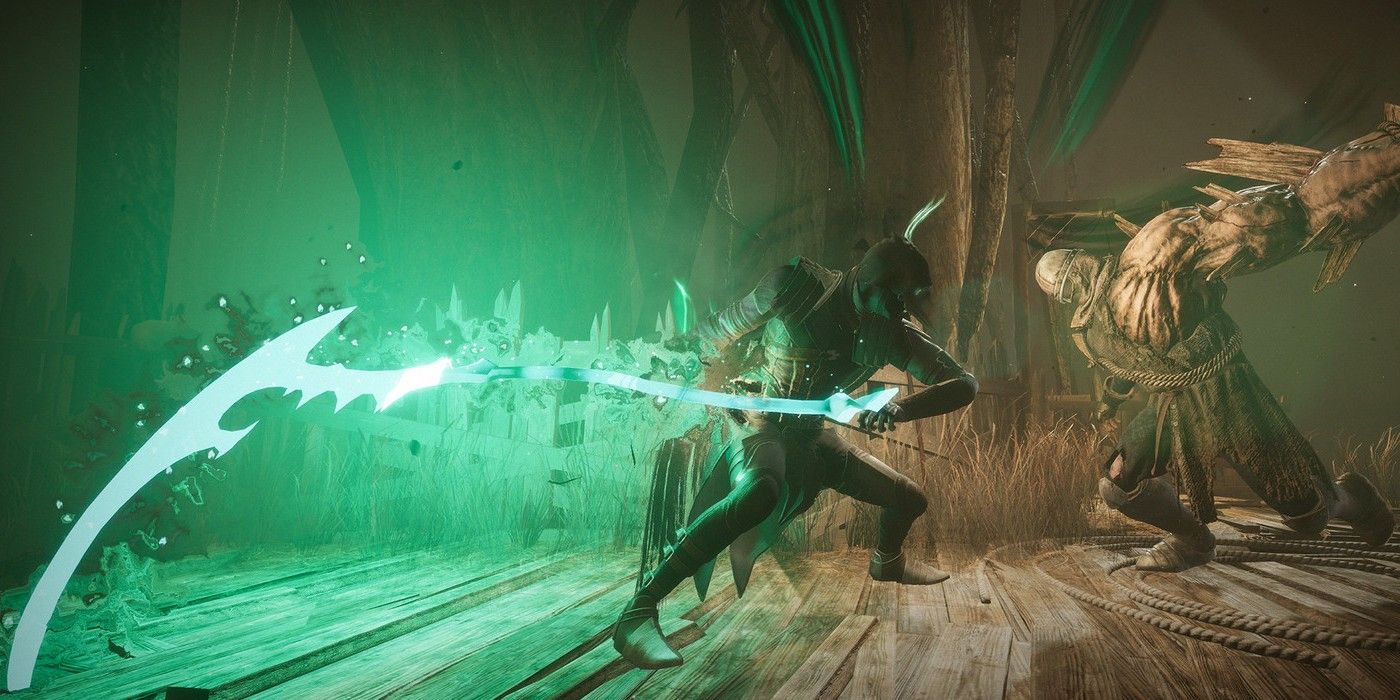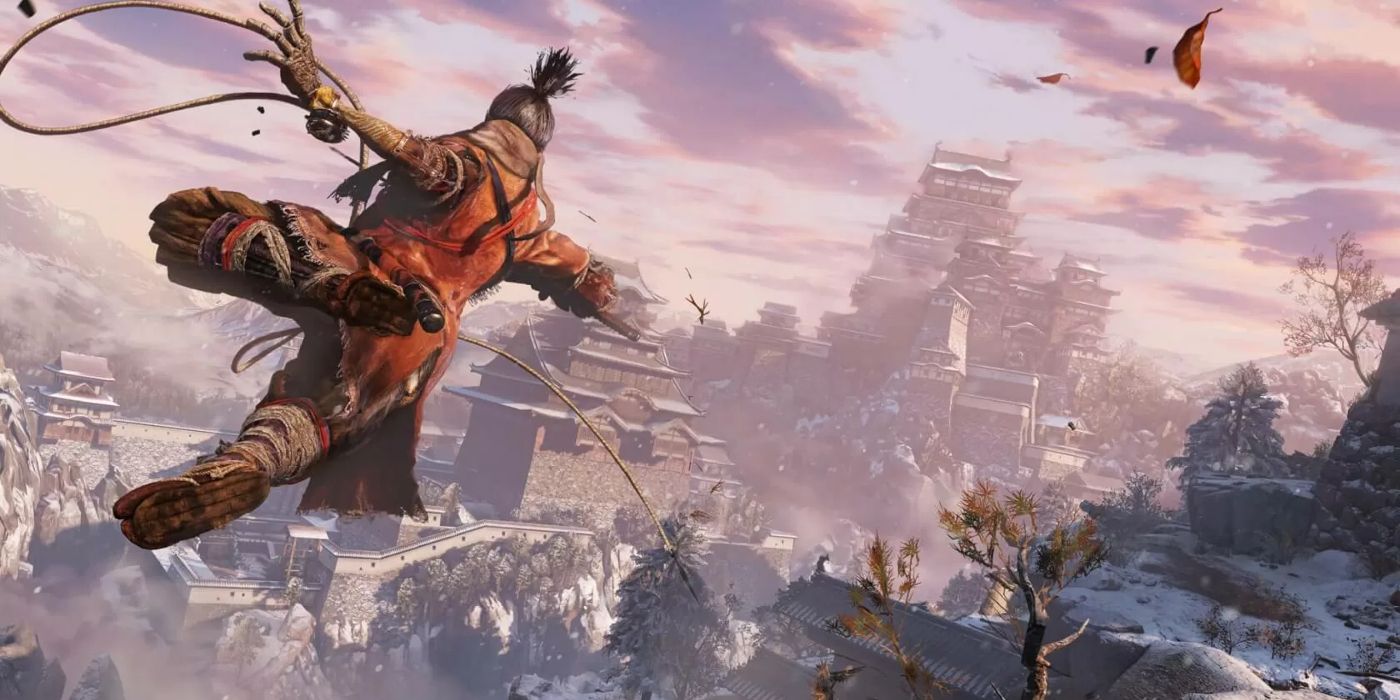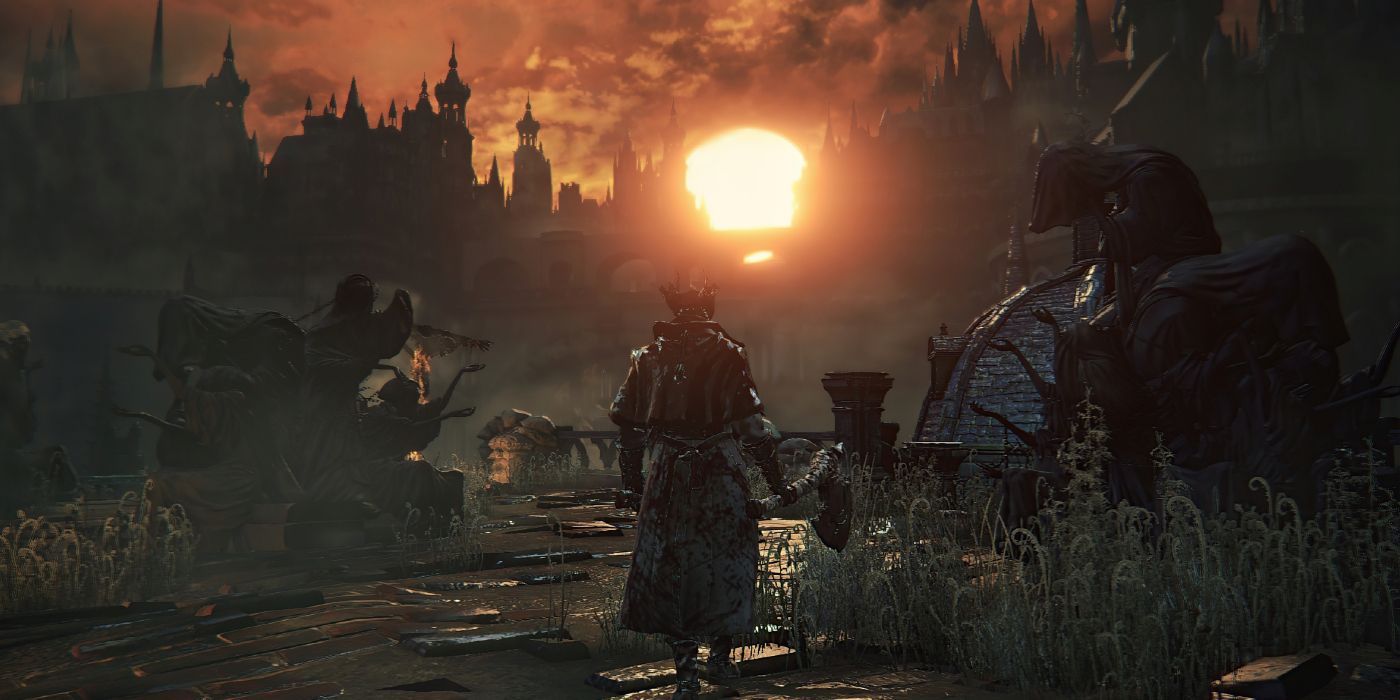
Recently, publisher Team17 and developer developer OverBorder Studio announced the stylish hack-and-slash game Thymesia for later this year. Taking control of the mysterious Corvus, players will navigate through a kingdom that was overwhelmed by monsters and diseases. The game takes obvious inspiration from Dark Souls and Bloodborne in terms of its combat and dark, plague-ridden gothic setting. Players can shape the various diseases in the city into different plague weapons, and use them to fight through a menagerie of grotesque opponents.
All signs are pointing to a game that the average FromSoftware fan will probably be into, at least until Elden Ring finally comes out. Comparing Thymesia and Elden Ring, as well as FromSoftware’s post-Dark Souls 3 Sekiro, reveals some interesting similarities and differences between the various Souls-likes. Thymesia is looking to hew closer to the more traditional Souls-like games, while Sekiro and Elden Ring are shaking up the formula with new game mechanics and a semi-open world. It may well be that FromSoftware’s efforts to revamp its own formula has made a space for games that still want to use it.
RELATED: What A Lot of Darks Souls Clones Get Wrong

Sekiro: Shadows Die Twice stands as the Souls-adjacent game most unlike Dark Souls that FromSoftware has released since the dark fantasy franchise began. In retrospect, it seems like it was a test bed for various new combat and traversal mechanics, including a different kind of parrying, improved stealth, swimming, and vertical movement. The fruits of these efforts will probably be made more clear in Elden Ring, but for now, Sekiro stands alone in terms of what it is.
Thymesia may have been conceived not only due to the desire to pay tribute to the beloved Souls games that came before it, but also as a stand-in for them while FromSoftware pursues other projects. Thymesia’s obvious Dark Souls inspiration stands at odds with Sekiro’s way of doing things, although the DNA of Dark Souls 3's Weapon Arts can still be felt in both games. Aside from that, some grisly giant monsters, and a possible bonfire system, Thymesia and Sekiro will likely have very little in common when the former releases, a notion easy to come across through their respective European and Asian dark fantasy aesthetics.
RELATED: Nioh 2 is Different Than Other Soulslikes

Where Thymesia takes a grounded, Bloodborne-like approach to exploring its fallen kingdom and Sekiro takes to the air and countryside, Elden Ring prefers travel by horseback. Described as a sort of “open field” game, Elden Ring will likely have a stronger exploration element than older, more level-based Souls games. Sekiro had this to some extent due to how wide open some maps were, but not in the way Elden Ring will. This commitment to exploring new avenues to express the Souls formula is what has fans so excited for the game, and so eager to hear more about it after its long absence from the news.
Thymesia, meanwhile, intends to embody the core of the Dark Souls franchise. Players will likely slowly crawl through levels, defeating enemies and finding shortcuts, all while anticipating a boss at a choke point between areas. This isn’t to say Elden Ring won’t still have linear, on-foot areas like that — it almost certainly will — but they won’t be the centerpiece like they were before. This simple difference in how the world is laid out will have consequences affecting every aspect of both games, ranging from how combat organically plays out to what mechanics will be present in each. It was made clear that Elden Ring would not play out like a typical Souls game since it was announced, so Thymesia’s developer has had plenty of time to plan around this and ensure that the games will be distinct when they release. Elden Ring may take Dark Souls in a bold new direction, but sometimes all that’s necessary is the familiar core.

Speaking of which, the inspirations Thymesia has taken from Bloodborne and Dark Souls, especially Dark Souls 3, cannot be ignored. Thymesia has patterned much of what it is, from its environmental design to how different characters move, after iconography seen in Bloodborne and DS3. Items appear to be present as glowing pickups on the floor, Corvus can slide around in a manner recalling Bloodborne, plenty of medieval barricades and structures are around while accompanied by plague imagery, and there even seems to be a special riposte animation similar to the Souls games. Even the giant bat boss shown in the trailer sounds and fights like a Bloodborne boss, and another boss is introduced in an area that recalls Lady Maria’s boss room. Thymesia wears its inspirations on its sleeves, pant legs, and mask.
That’s not to say “being Souls” is all there is to Thymesia. The plague system in particular seems to encourage trying many different builds in the span of a single playthrough, whereas a typical Souls game wants players to commit to one early on. Corvus is also a set, designed character like Wolf is in Sekiro, and what role they play in the story has yet to be seen. It’s also not clear how this story will be told, as a game by a different developer may be more inclined toward using cutscenes to tell its story than an archetypical FromSoftware Souls-like.
Whatever the case is, dedicated Souls fans will no doubt welcome Thymesia as something substantial to sink their teeth into while waiting for Elden Ring. As mods like Dark Souls 1’s upcoming fan sequel Nightfall show, the Souls fanbase is not content to simply sit around waiting for the next game in their beloved genre to come out. OverBorder Studio has done a fantastic job of capturing the spirit of a Souls game in its reveal trailer, and hopefully that inspiration extends to putting its own spin on things, even if that originality has to wait for its next game. At any rate, hopefully Thymesia will fill the Souls-shaped hole in fans’ hearts that Sekiro did not, and Elden Ring has not been able to yet.
Thymesia is coming to PC later in 2021.
MORE: Elden Ring-Dark Souls Comparisons May Just Be Beginning

